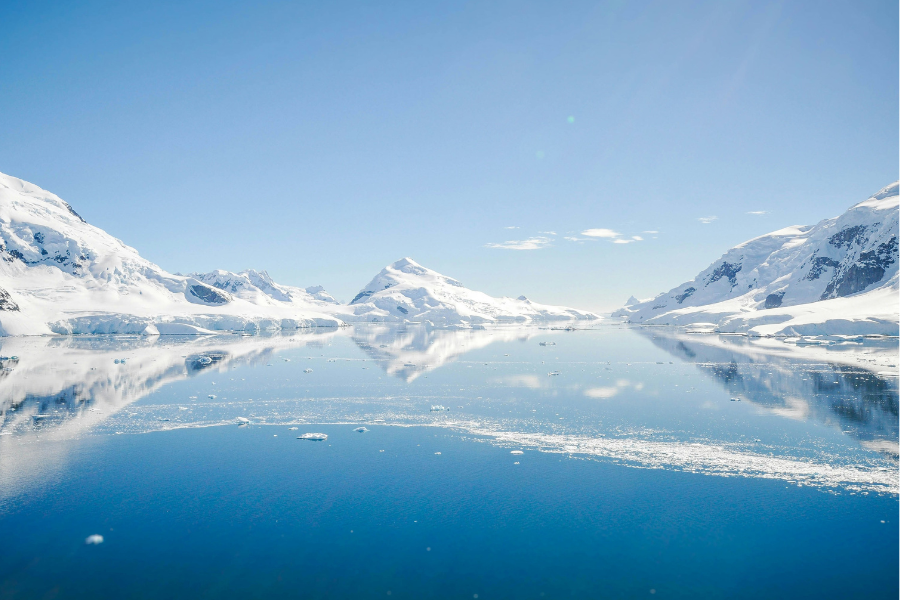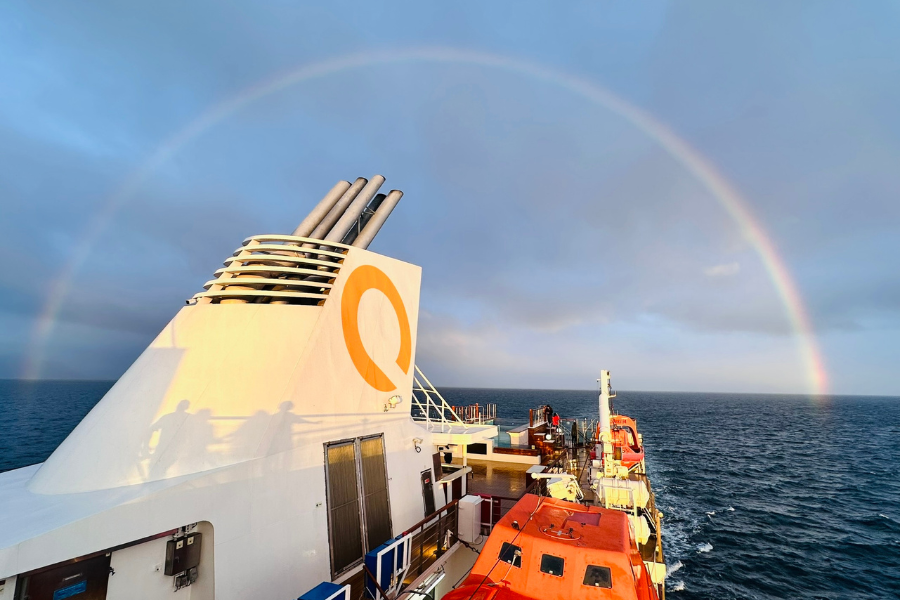
The Best (Only) Time to Travel to Antarctica
First Things First: There's Only One Cruise Season
You can’t just hop on a cruise any time of the year and sail to Antarctica. It’s a frozen frontier. It’s a hostile and barren environment that’s literally impassable for six months of the year. But that’s why you want to come and see it, right? Right. But you can only come when it’s possible, and that’s during the Antarctic Summer.
The Antarctic Summer stretches from late October to Early March. Outside of that, it’s frozen solid, pitch black, and basically impossible to access. So, if you’ve spent a lifetime dreaming about penguin encounters and kayaking past stadium-sized glaciers on the glassy Southern Ocean, you’ve got a five-month window. And once you enter that window, there’s a lot of variation.
Each part of the season has its own personality. So it’s down to you to decide what it is you want from your Antarctic adventure. Wildlife? Icebergs? Fewer crowds? It’s your call.
All we can do is make it happen once you know.
Late October to November: Icy, Wild, and Utterly Magical
Best for: Snow-covered landscapes, towering icebergs, and fewer travellers
Expect: Pristine scenery, courtship displays, active glaciers
The season kicks off in late October or early November, when Antarctica is just beginning to wake from its long winter slumber. This is when the continent feels its wildest and most desolate. The ice formations at at their most striking, the snow is deep and unspoiled, and the landscapes are Narniaesque.
The light casts a surreal glow on these wintery landscapes, with low-angle sunlight forming stretched out shadows and soft, moody sunsets. Just bear in mind that it is colder, the days are shorter, and expedition itineraries can be slightly more flexible (unpredictable) as ice still dominates many routes.
Wildlife-wise, it’s peak nesting season for penguins and seabirds, especially along the Antarctic Peninsula. If you’re an ornithophile, you’ll be privy to courtship rituals, egg-laying, and plenty of fluffed-up drama. Seals are also more visible around this time of year. Expect to see them lounging on ice floes or splashing by your Zodiacs.

December to Early January: The Height of Summer
Best for: Baby penguins, 24-hour daylight, and peak wildlife activity
Expect: Warmer temperatures (relatively), bustling colonies, incredible photo ops
Antarctic High Summer is probably the busiest time of year in Antarctica. Temperatures are at their mildest, so expect a sweltering 0°C, and you’ll also be treated to 24-hour daylight. It sounds surreal, and it’s a little eerie at first, but it won’t take long before you're out on the deck snapping sunlit photos at 2 am. It’s not just an astronomical gimmick, though. 24-hour daylight serves a practical purpose, as you can enjoy more landings, Zodiac trips, and whale spotting sessions into your elongated day.
Wildlife, again, dominates the itinerary. Baby penguins are hatching everywhere. Seals nap on the shores, skuas (the local bullies) circle overhead, and whale sightings begin to ramp up—especially humpbacks and minkes.
Just bear in mind: this is the busiest time to go. Ships sell out far in advance, and while “crowds” are still relative (we’re talking small expedition vessels, not mega-cruise liners), you’ll definitely want to book early. We’d recommend up to two years in advance.

Late January to February: Whale Central
Best for: Whale encounters, ice-free waterways, and longer expedition routes
Expect: Peak marine activity, easier navigation, and dramatic glacier calving
The deeper we get into summer, the more whales you’ll expect to see. This is hands-down the best time for marine encounters. You’ll regularly spot humpbacks breaching, orcas hunting, and curious minkes gliding alongside your Zodiac as if they’re giving you a guided tour.
There’s less sea ice at this time of year, as the warmer weather has melted much of it. This allows your ship to push deeper into the continent, opening up more opportunities for landing at remote sites. That includes legendary places like the Lemaire Channel or even crossing the Antarctic Circle, if your itinerary permits.
Glaciers are also more active now. You'll often witness thunderous cracks and splashes as massive chunks of ice calve off into the sea.
The only downside? The snow is starting to melt, which means the scenery isn’t quite as pristine. Penguin colonies begin to stink, and some sites can get a bit muddy.

March: The Quiet Goodbye
Best for: Solitude, late-season deals, and atmospheric sunsets
Expect: Mellow light, fewer ships, strong chances of whale sightings
March is, in essence, October’s mirror image. The crowds are dying down, the frost is setting in, the light returns to that eerie semi-darkness that captures the imagination and refuses to let go. Like October, it’s a photographer's dream. This time, it’s fiery sunsets, long shadows, and golden tones.
You might see slightly fewer penguins, slightly more whales, and much fewer expedition ships. Because the crowds are thinning out, you’ll experience this place the way it’s supposed to be experienced. The desolation of Antarctica is what makes it so beautiful, so visiting at the worst time can often be the best.
That said, the weather can be more changeable, but what do you expect from the world’s most hostile environment? It isn’t supposed to be a walk in the park.
On the plus side? It’s often the best time for deals. Cruise lines keen to fill their final departures may offer last-minute discounts or value-added perks. If you’re flexible and don’t need to tick off every textbook penguin photo, it can be a surprisingly rich time to go.

When Should You Go?
That depends on what matters most to you:
-
Love wildlife? December to February is your window.
-
Want pristine landscapes and fewer people? Aim for November.
-
Chasing whales and wide-open water? Late January through March is ideal.
-
After the best value? March (but book wisely).
Whatever month you choose, just remember: Antarctica isn’t your average destination. It’s unpredictable, wild, and humbling in the best way. No two cruises are ever exactly alike and that’s part of the magic.
So check your calendar, dig out your thermals, and book early. Because when it comes to the end of the world, timing is everything.




